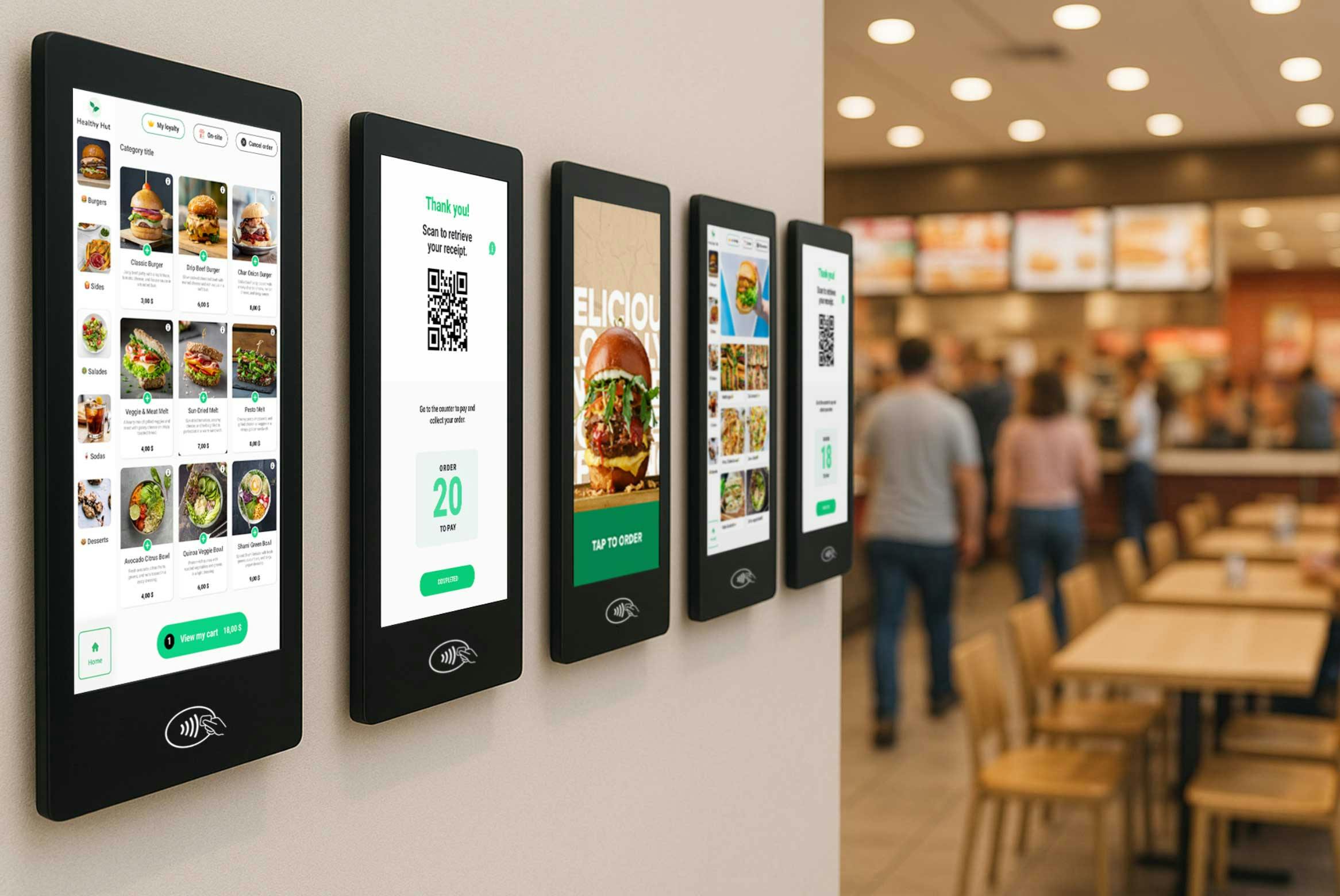FAQs About the New Role of Kiosks in Hospitality

- How can kiosks reduce wait times and improve order accuracy?
- What’s the ROI of adding kiosks to high-traffic locations?
- How do I keep kiosk menus in sync with online and in-store platforms?
- Can kiosks help us upsell more effectively?
- Are kiosks suitable for all store formats or only flagships?
- Closing Thoughts
Kiosks have gone from novelty to necessity in many hospitality environments, especially in high-traffic or high-volume locations. For restaurant operators, they offer more than just a way to speed up lines. Kiosks are now a powerful tool to boost order accuracy, optimize labor, and even drive upsells.
If you’re rethinking your chain restaurant's in-store experience, let's unpack the key questions about how kiosks fit into a modern ordering strategy and how to get the most out of them.
How can kiosks reduce wait times and improve order accuracy?
By using a kiosk, you cut out the middleman. Nobody mishears your cashier, misses information due to line pressure, or feels rushed while ordering. Customer orders are taken at their own pace, with complete visibility of pricing and modifiers, so there is a lower chance of mistakes.
However, accuracy and speed are achieved only when the kiosks are fully integrated into your existing system, and orders flow directly into the same platform that manages your digital, in-store, and delivery orders.
What’s the ROI of adding kiosks to high-traffic locations?
When ordering is shifted to kiosks, labor can be allocated to prep, fulfillment, and hospitality, reducing overhead. Kiosks are also better at upselling than humans. They never forget to ask customers if they'd like a drink or want to make it a meal.
How do I keep kiosk menus in sync with online and in-store platforms?
Use a centralized menu management platform. With Deliverect, you update your menu once and push it live across every channel—kiosks, POS, delivery apps, and your website.
That's how Goiko, for example, maintains a consistent experience across dozens of locations without doubling admin work.
Can kiosks help us upsell more effectively?
Yes—and more consistently than staff. Kiosks can be programmed to suggest upgrades all day long, and with time, you can adjust upsell logic based on performance data.
Operators using Deliverect with kiosk integrations can see what’s working best, tweak upsell prompts, and roll out the change quickly across their whole network of locations. So, every kiosk is not just a point of sale but a dynamic sales engine.
Are kiosks suitable for all store formats or only flagships?
Kiosks are best suited to high-volume or high-traffic environments but not exclusive to larger flagship stores. Fast-casual chains, ghost kitchens with pick-up only, and even small-footprint QSRs are implementing smaller kiosk units or wall-mounted tablets.
It's not about the size; it's how you use it. Introducing kiosks into your system as a seamless flow will improve your throughput without adding new complexity.
Closing Thoughts
When used correctly, kiosks are not just another piece of hardware but a strategic asset. By plugging them into your broader ordering ecosystem, you remove friction for team members and guests, unlock new upsell opportunities, and future-proof your in-store experience.
Still, all the gains made at the front of the house depend on what's happening behind the scenes. If the kitchen isn't set up to handle increased order flow or adapt to shifting demand, the guest experience suffers.
Here, resilient back-of-house operations are just as critical to long-term success.